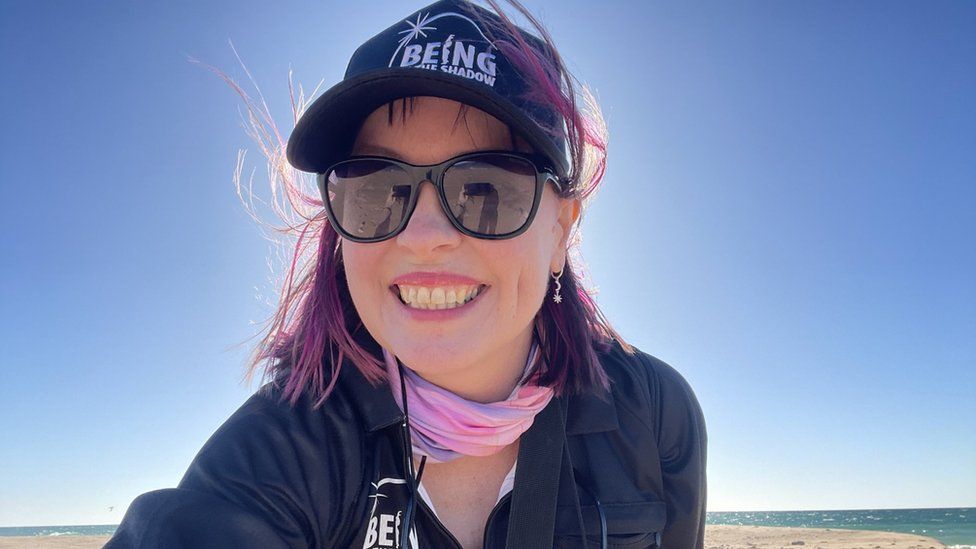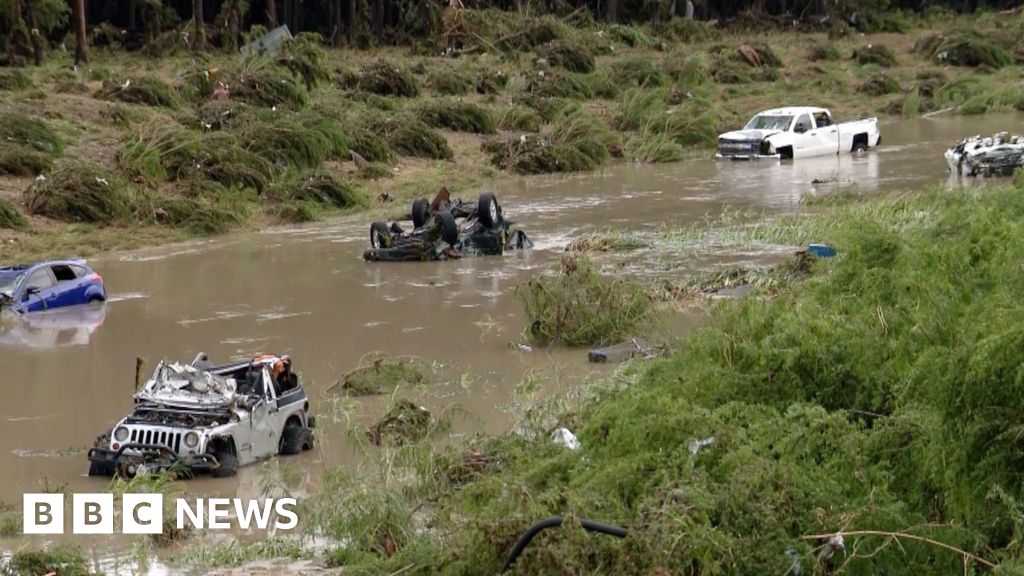ARTICLE AD BOX
 Image source, Kate Russo
Image source, Kate Russo
Australian psychologist Kate Russo has seen 13 total solar eclipses since 1999
It was 25 years ago when Kate Russo saw her very first total solar eclipse.
The Australian psychologist was living in Northern Ireland at the time and had always wanted to witness the spectacle in person.
She was in between her Masters and PhD studies in her 20s when, in 1999, the path of totality happened to cross nearby over the southern coast of France.
"I thought it was going to be just my first - my only - experience of an eclipse," Ms Russo said. "Something you haven't experienced and then you do and you're like, 'that's pretty cool.'"
Instead, what she saw that day changed her life forever, sparking a life-long journey of studying and chasing solar eclipses around the globe.
On Monday, Ms Russo will watch her 14th total solar eclipse, this time in Uvalde, Texas. She is one of many eclipse chasers who have arrived in North America in recent days.
Experts estimate that more than a million people from inside and outside North America will travel towards the path of totality.
Many are individuals who have combined their love of astronomy, exploration, science and travel into a mission to see as many eclipses in their lifetime as possible.
Some are driven by their love of space and desire to understand the universe around them. Others, like Ms Russo, pursue the indescribable feeling that comes with seeing a total solar eclipse in person.
The 51-year-old recalled how standing in the shadow of the moon for the first time was an "immersive and emotional" experience.
A total solar eclipse, by definition, occurs when the moon's shadow covers the sun's rays entirely, plunging those in the shadow's path into darkness for a few minutes.
But Ms Russo said experiencing it was much more than that.
She described feeling a drop in temperature and the wind picking up around her, as if a storm was approaching. She also noticed the colours of her surroundings being drained in the absence of the sun's rays, except for an orange, reddish glow around the horizon and a thin ring of light in the sky - also known as the corona.
"Moments before you're looking at the sun," she said of the moment the eclipse begins. "Now, there's just a hole in the sky where the sun should be. It's like everything is turned upside down."
Ms Russo said the experience inspired her to study people's emotional response to witnessing a total solar eclipse.
Almost always, she said, there is a predictable sequence in which people take-in an eclipse: it begins with a sense of wrongness and primal fear, followed by a feeling of connectedness and insignificance. Then comes the euphoria, and the desire to repeat those feelings all over again.
Even those who are more scientifically-minded, she noticed, can't help but stare at an eclipse with awe.
"Regardless of culture or your language, people have that same experience and it makes them feel part of something greater."
It is a feeling that David Makepeace, another eclipse chaser from Toronto, Canada, knows very well.
Mr Makepeace, 61, who is about to catch his 19th solar eclipse, said the experience evokes existential questions for him.
"How could we possibly live in a solar system that is that beautiful? That has that much of an emotional punch to it?" he's wondered. "How could that possibly be?"
Paul Maley, a 76-year-old retired data analyst and flight control specialist who worked at NASA for 41 years, said the desire to chase an eclipse is akin to an addiction of sorts.
"Once you get to see something that is this unique, you want more of it," he said.
Image source, Patrick Poitevin
Image caption,A photo captured by Patrick Poitevin during a total solar eclipse in Indonesia in March 2016
Mr Maley, who lives in Arizona, has seen 83 eclipses since 1970 - including annual, partial and total solar eclipses - across 42 countries.
His love of chasing them inspired him to launch a tourism company which takes dozens of people on trips to see eclipses around the world. Some of his guests are seasoned, he said. Others are catching their very first eclipse.
To mark the 8 April event, Mr Maley launched a boat cruise off the coast of Cabo San Lucas in Mexico with nearly 200 passengers.
Being on the water gives him mobility should the cloud cover change, he said, offering him the best possible chance of capturing a spectacular eclipse.
Also en route to Mexico is British eclipse chaser and retired material scientist Patrick Poitevin, who is on a quest to catch his 26th total solar eclipse.
Mr Poitevin, who lives in Derbyshire, said he often tries to combine his love of scientific innovation and astronomy when chasing eclipses - challenging himself with different projects or views for each one he catches.
But for this upcoming eclipse, he said he intends to sit back and watch with only a pair of binoculars in hand.
Mr Poitevin noted how this particular eclipse is slated to last four and a half minutes in Mexico. This, he said, will give him and others the chance to take in the view - maybe spot a few planets, stars, and even a comet.
For those catching their first-ever solar eclipse this year, the seasoned chasers had one piece of advice: put away the camera and enjoy the moment.
Fiddling with something, like a camera or a phone, lessens the experience, Mr Makepeace said.
"You're busy with something else while the best thing in the world is happening over your head."

 1 year ago
102
1 year ago
102








 English (US) ·
English (US) ·